The Sharpstar Z4 packs a significant punch with a six-element optical system.
By virtue of this sextuplet design, the Z4 is developed to go above and beyond conventional doublet and triplet apochromatic refractors, by further minimising image distortions including vignette, field curvature and colour fringing.
Upon opening the box, we were greeted by a smart and solid locking case.
Its unique twist-and-lock system was reassuring – we had no doubt that the locks would hold securely, over and above the clamps seen on other cases.
- Buy now from Ali Express
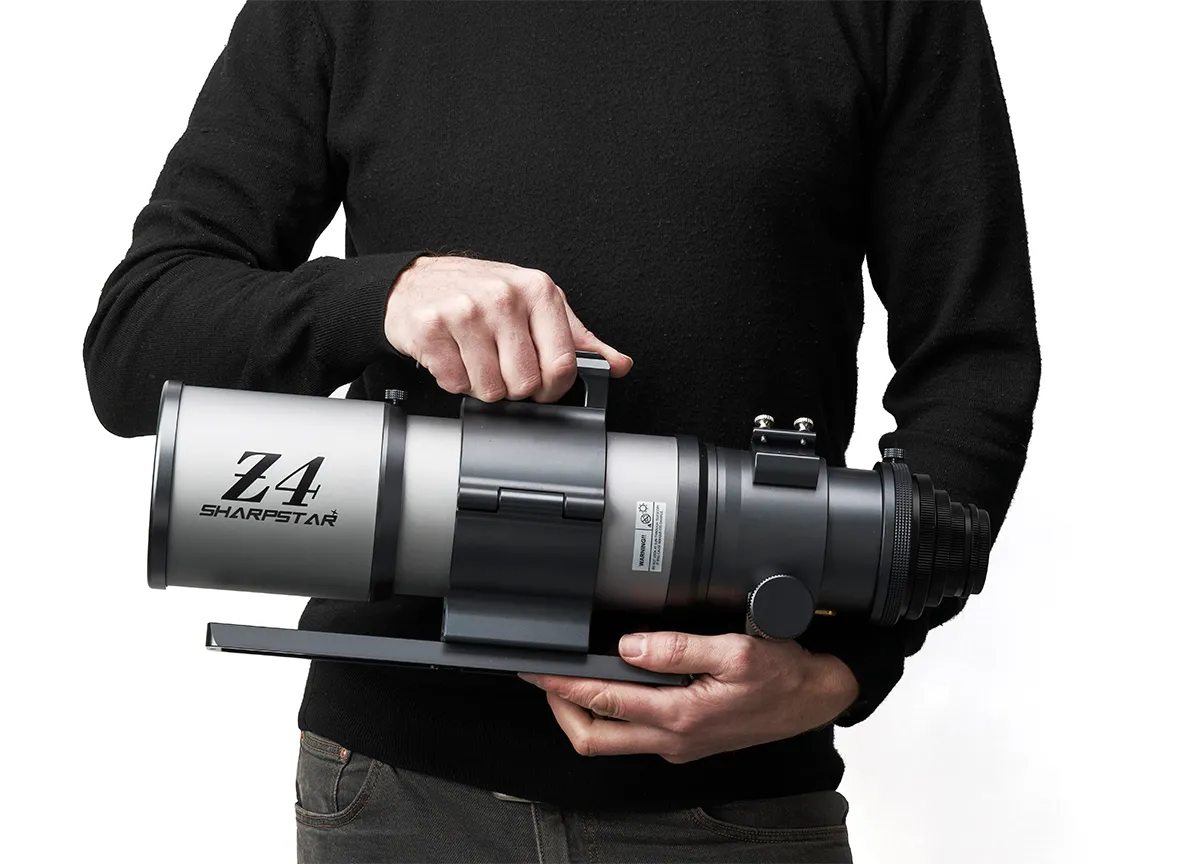
The excellent build design of the case carried over to the telescope inside, where the muted matte silver and grey colours gave a sleek and sharp appearance that we found impressive.
It’s nice to see something a little different to the standard white tubes.
Winter skies proved damp and temperamental, but we were keen to put this uniquely designed astrograph through its paces.
Mounting the Z4 was easy enough, the carrying handle enabling us to lift it into position, but we did note that the extra glass incorporated into the sextuplet design added considerable weight.
At 4.3kg, it pushes close to the limits of what we would deem a portable or a beginner’s telescope, especially if adding a large camera and guide accessories.
While we were able to achieve balance relatively easily for our imaging setup, we did wonder whether the Z4 would benefit from a slightly longer dovetail for those with heavier imaging equipment.
Nevertheless, we found preparing the Z4 for clear skies a breeze. Because of the short window of opportunity the weather gave us, we elected to use a DSLR for some short-exposure photography.
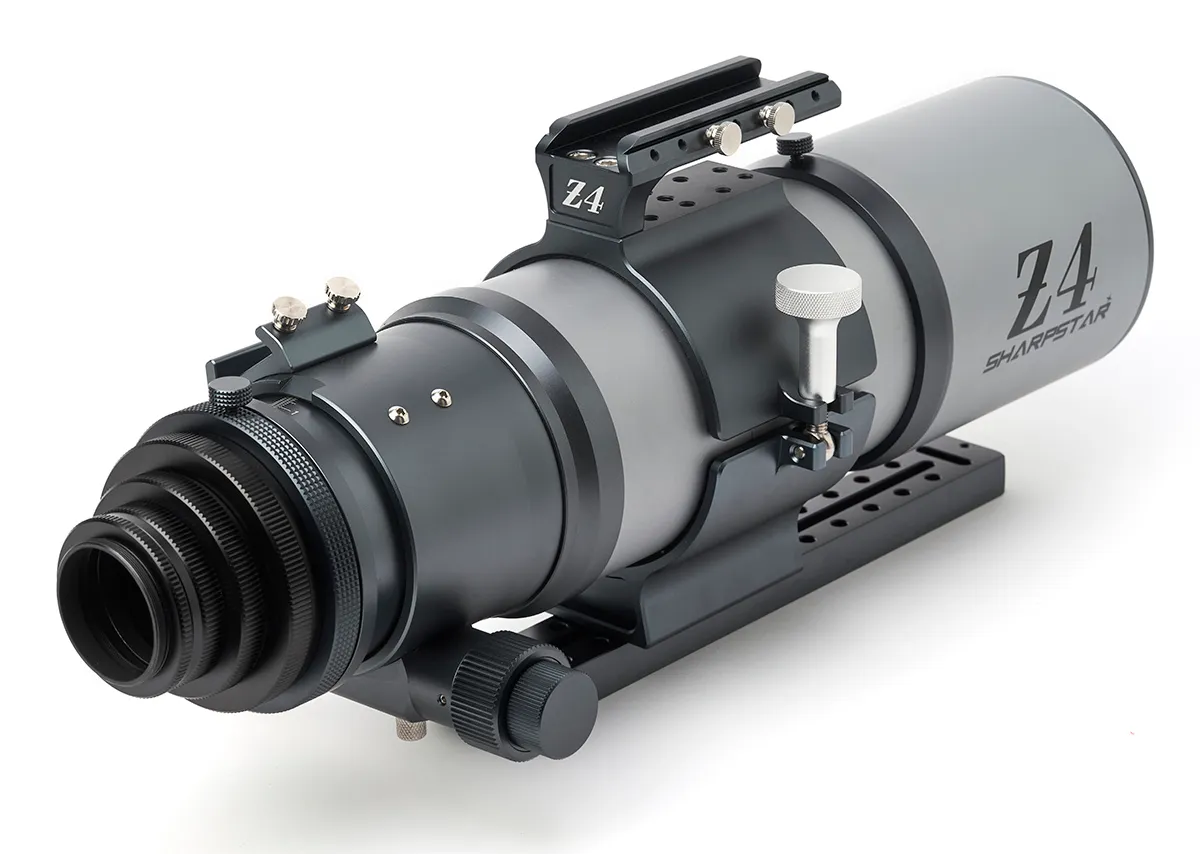
Attaching the camera was relatively easy thanks to the adaptors provided, although we needed our own M48 to T2 adaptor to attach the DSLR via a T-ring.
Sharpstar recommends using a crop sensor (APS-C) camera on the Z4, and so we popped our Canon 70D on first.
The rack and pinion focuser felt exceptionally well-made and allowed complete control over the focusing process.
We were confident that the focus would hold throughout the imaging session and slewed over to the Sadr region in Cygnus.
Some initial test frames confirmed a wonderfully flat field of view with no observable star curvature or halos, despite the prominent star Gamma Cygni.
We fired off an hour’s worth of frames on the bright Butterfly Nebula (IC 1318) before a short hop over to the Tadpoles (IC 410), the Red Spider (NGC 6537) and the Fly (NGC 1931) nebulae.
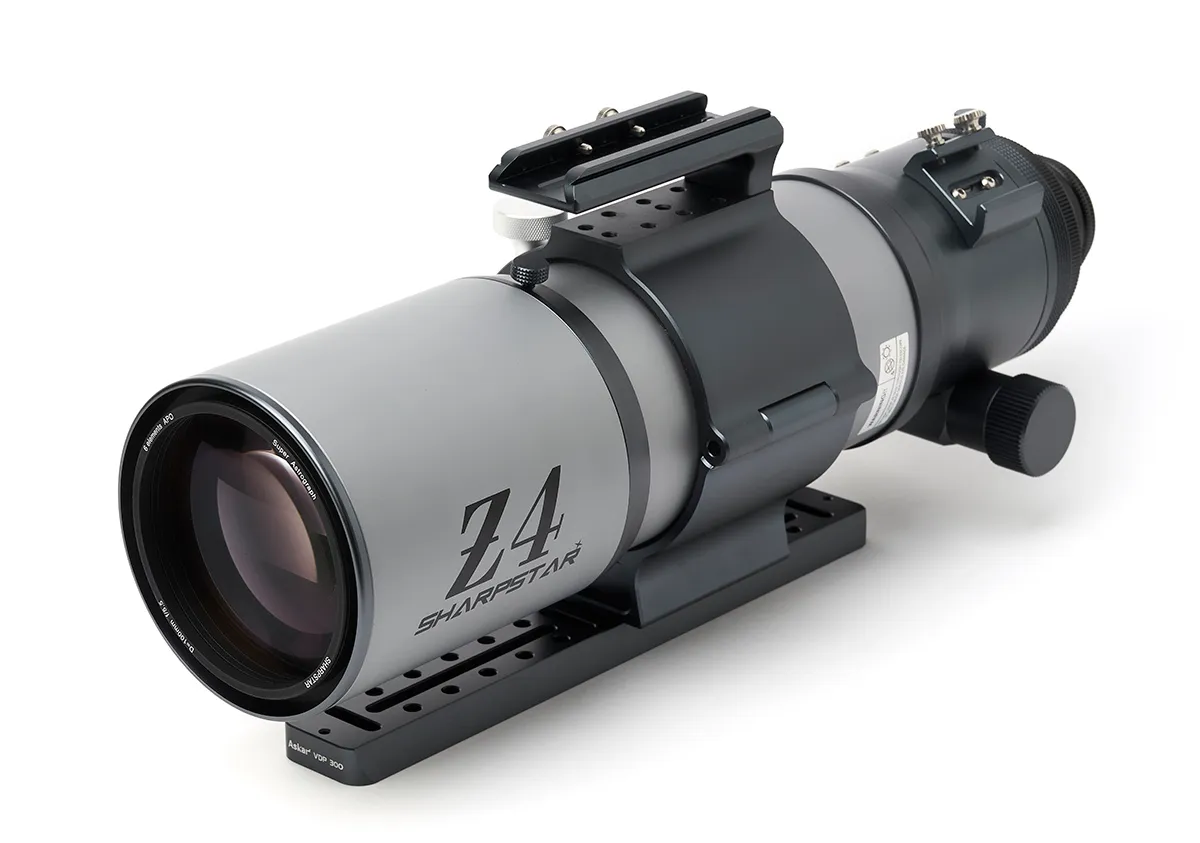
After capturing another hour of data, we decided to pop our full-frame Canon 6D DSLR on for a couple of test frames.
We saw that, unsurprisingly, the corners were cut off and therefore there would be vignetting if using the Z4 with full-frame cameras.
Heading inside, we were curious to see how the field of view looked in post-processing.
Stretching the data confirmed a flat field with pin-sharp stars edge to edge.
We could not detect any fringing around the stars either, which further helped our processing as it made balancing and controlling our colours more straightforward.
Despite the relatively short exposure times, we were left with images from which we were able to get optimal results as we weren’t inhibited by bloated stars or uneven background gradients.
Price-wise, the Sharpstar Z4 is positioned towards established astrophotographers rather than beginners, though it is certainly user-friendly enough to be suitable for any and all imagers, as long as they use APS-C DSLR cameras.
Ultimately, the Z4 proved a superbly-made and smart astrograph that contributed to beautifully clean images. It’s a sophisticated optical system we would certainly wish to use again and again.
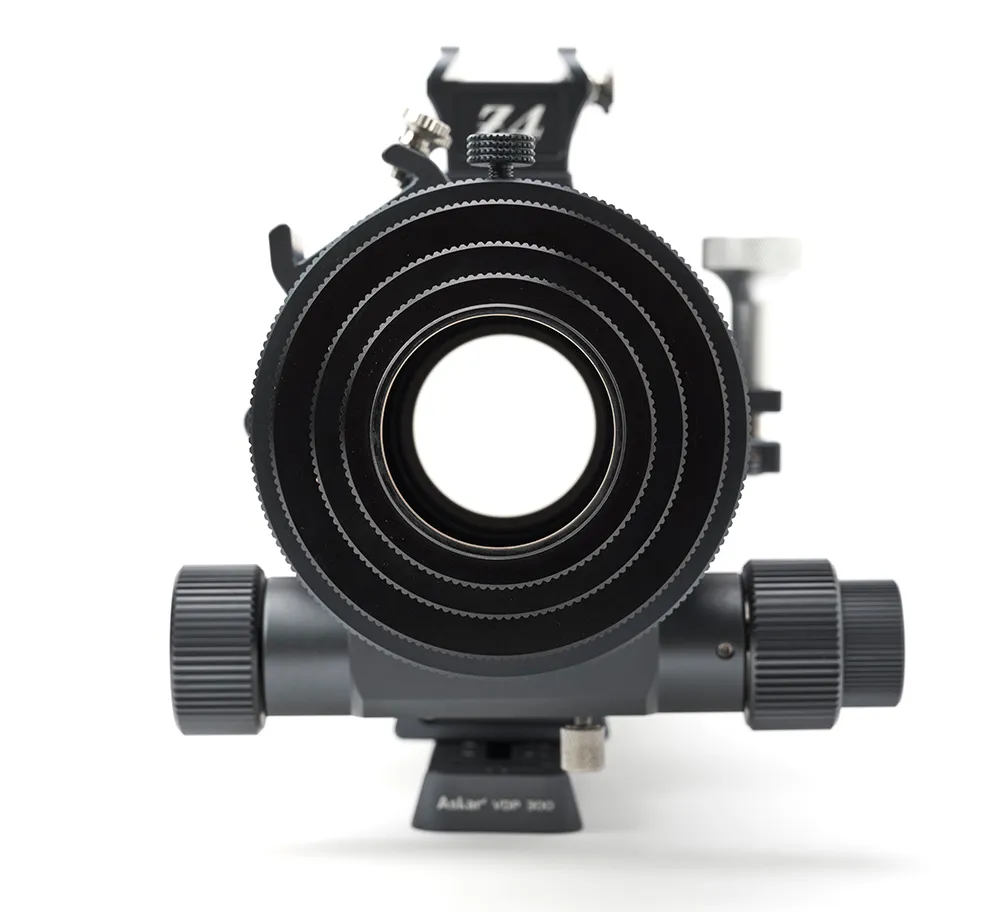
6-lens design
As a sextuplet astrograph, the Sharpstar Z4 comprises three lenses at the front and three at the back of the optical tube assembly.
Two of these are extra low dispersion (ED) glass, one positioned at either end of the tube.
These are designed to dramatically reduce the effects of chromatic aberration, including star halos.
The Z4’s optical layout promises and delivers a flat field across a 36mm image circle – equivalent to the APS-C (crop sensor) DSLR or astro cameras used by many astrophotographers.
This means that vignette is minimised when coupled with APS-C cameras.
Moreover, the sextuplet’s built-in flattener removes the expense and complexity of purchasing and correctly spacing a separate flattener.
With an aperture of 100mm, f-ratio of 5.5 and corresponding 550mm focal length, the Z4 also has an excellent profile for deep-sky widefield imaging.
This astrograph provides the perfect field of view for many popular nebulae and star clusters, and notable improvements on edge-to-edge image quality for photographers upgrading from budget or intermediate telescopes.
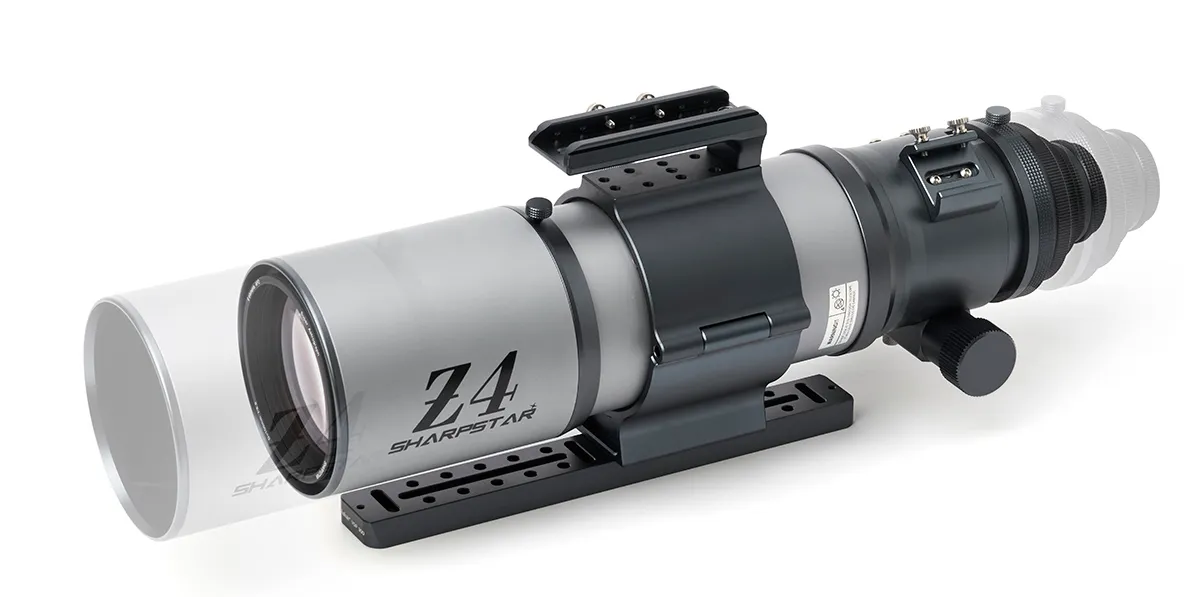
5 best features
Integrated carrying handle
Attached to the tube ring, the robust carrying handle is specially machined to allow the fitting of a guidescope bracket, an essential accessory for many astrophotographers. It also makes mounting and balancing the telescope easy and secure, as it reduces the risk of dropping the telescope while transporting or adjusting its position.
Vixen-style dovetail andbuilt-in tube ring
The 300mmVixen-style dovetail plate is smartly colour-coordinated and designed to be easily attached to standard equatorial mounts. The accompanying clamshell-style tube ring holds the Z4 securely with no flexure, and its position along the dovetail plate is easily adjustable to ensure the setup can be properly balanced.
Dual-speed focuser
The large 3.4-inch focuser reduces vignetting and comes with a 1:10 fine adjustment knob, allowing the user greater control and accuracy over the focusing process. Meanwhile the 360° built-in rotator, positioned just behind, allows complete rotation of the focuser barrel, ensuring no loss of focus while adjusting camera angle or orientation.
Retractable dew shield
Dew is the bane of astrophotographers’ lives, and a dew shield is essential to ensuring optics stay free from the effects of moisture. The fully retractable dew shield ensures the system is compact, making the refractor only 482mm when pushed back, and reduces the risk ofdamaging the telescope while moving it.
Adaptors
The Sharpstar Z4 comes with a suite of adaptors to attach all types of cameras and accessories for DSLRs and CMOS or CCD cameras. They include M86, M68, M54 and M48 adaptor types. TheM48 adaptor is fitted with aninternal thread designed to accommodatetwo-inch filters.
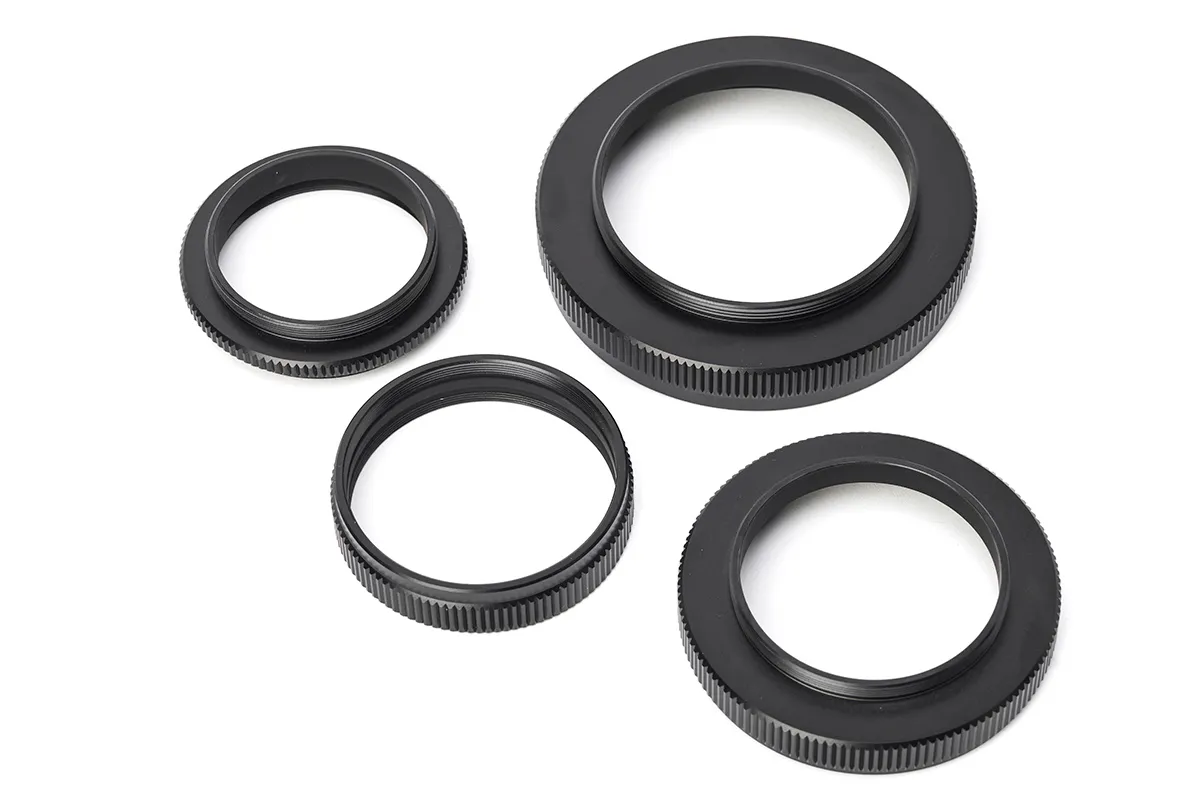
Vital stats
- Price: £2,259
- Optics: Air-spaced apo sextuplet
- Aperture: 100mm
- Focal length: 550mm, f/5.5
- Focuser: 3.4-inch dual-speed rack and pinion; 1:10 ratio fine adjustment knob
- Extras: Dovetail bar, tube rings, adaptors, carry case, handle, retractable dew shield
- Weight: 4.3kg
- Supplier: First Light Optics
- Tel: 01392 791000
- www.firstlightoptics.com
This review originally appeared in the February 2023 issue of BBC Sky at Night Magazine.
